At this time of year, with frost on the windows and a chill in the air, I can count on plentiful birds foraging around the habitat in our backyard. Cedar waxwings pluck berries from the trees and dark-eyed juncos scurry under shrubs. I can count on seeing American goldfinches, hairy woodpeckers, California quail, and lots and lots of house finches.
And not just in my yard. I know I’ll see house finchesin nature preserves, vacant lots and backyards throughout the season. If you live in the United States, chances are you’re familiar with this little bird, too. As the Cornell Lab of Ornithology puts it, “If you haven’t seen one recently, chances are you can find one at the next bird feeder you come across.”
Like many backyard birders, I enjoy seeing these little birds and their bright splashes of pink that brighten a winter day. But the general love for house finches is also curious. In much of their range, they’re non-native. While other non-native birds – house sparrows and starlings, I’m looking at you – receive heaps of scorn in birding and conservation circles, the house finch generally somewhat unscathed by negative PR.
While it’s often in sight, it’s out of mind. Why do we love house finches but hate house sparrows? How did the house finch spread? It turns out, the house finch’s spread is a fascinating story.
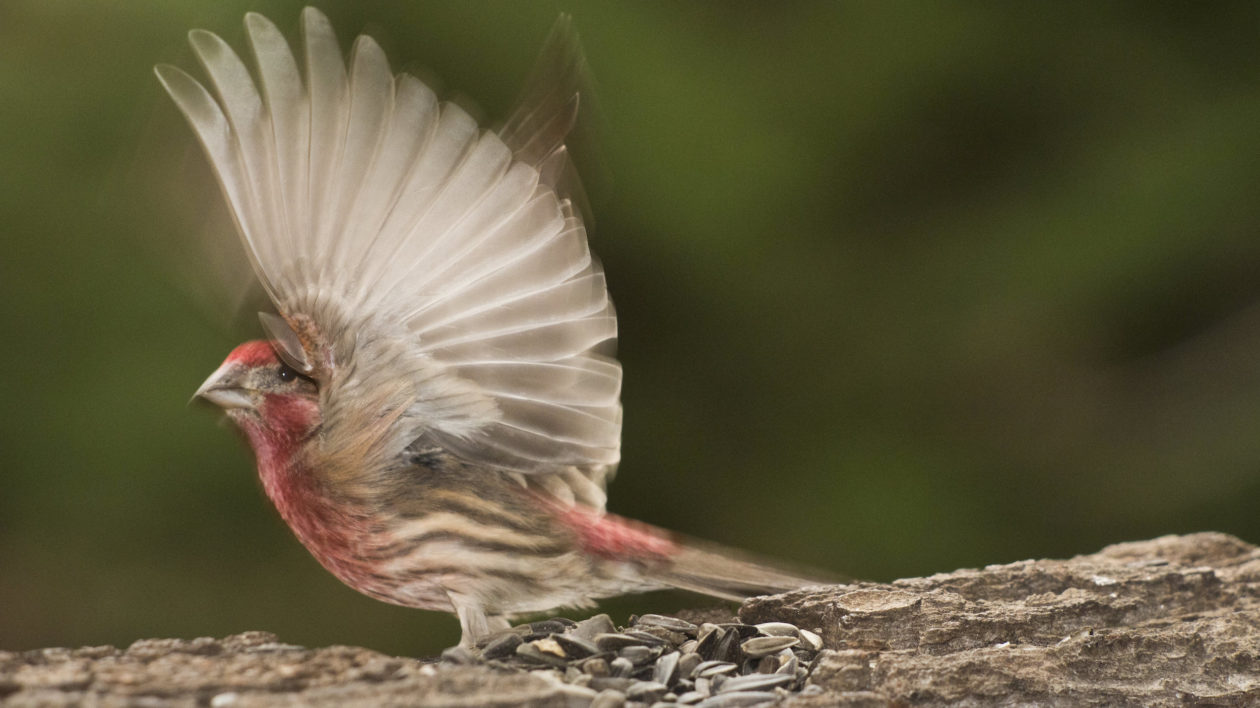
The Hollywood Finch
The house finch is not the first nor the last story of a house pet gone wild. House finches are native to North America, but only in the southwestern United States and Mexico. The males have bright red chests, and someone had the idea that they would make attractive pets. Birds were captured in the wild and shipped to New York City in 1940.
The name “house finch” is not the greatest name in marketing, and so the birds were rebranded as “Hollywood finches.” According to the National Audubon Society, more than 100,000 wild house finches (most of them males) were captured and sent to New York.
By then, the United States already had already well-established laws protecting wild birds from commerce, including the commercial pet trade. As the birds began showing up in pet stores, conservationists sprang into action. The National Audubon Society went undercover to expose the industry, arranging fake buying transactions to catch illegal pet traders.
The capture of wild birds for the pet trade has devastating effects on the wild bird trade. The actions of those who sought to stop it were heroic and commendable. This undercover operation also led to one of the most dramatic bird introductions on the continent. When pet stores realized they were facing arrest, they set the house finches loose.
A group of birders first noted a house finch in New York in 1941, causing excitement at the new species record. At the time, many did not know that a bunch of house finches had recently been released.
A report in 1951, ten years after the initial release, estimated there to be 280 house finches in the eastern United States. This would hardly indicate a rapidly expanding population. But over the next 20 years, they would be found all along the East Coast, and by the 1980s they were found widely across North America.
Current population estimates vary widely, but there are at least 250 million house finches now on the continent. As with house sparrows, they are very adaptable birds and thrive with the kinds of human disturbance that doom many native birds. They do quite well in suburbia, especially with all those bird feeders.
Unlike house sparrows, no one seems to mind their presence. Why? It’s probably as simple as this: they’re pretty. But do they have any negative impacts?
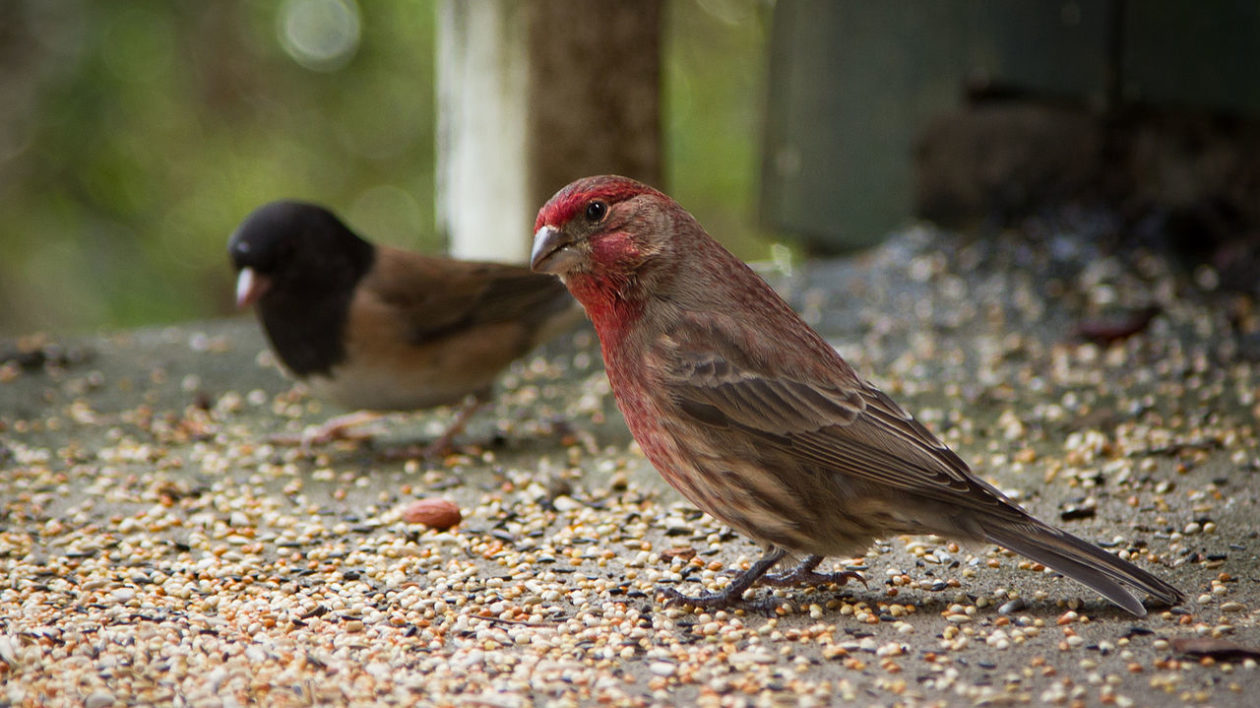
Urban Competition and Eye Disease
Of course, with hundreds of millions of house finches flying around new habitats, there are undoubtedly impacts. Researchers are still untangling what those are.
The similar purple finch, for instance, is a bird of forest habitats that adapted to the bird feeders of suburbia. But as house finch populations rose, there is evidence that the purple finch moved back to being a forest bird.
But the house finch might have the most impact on house sparrows. Research has found that house finches compete directly with house sparrows. As the Cornell Lab’s Project FeederWatch reports, “as House Finches increase, House Sparrows decrease, and as House Finches decrease, House Sparrows increase. These results suggest that competition between the two species does exist.”
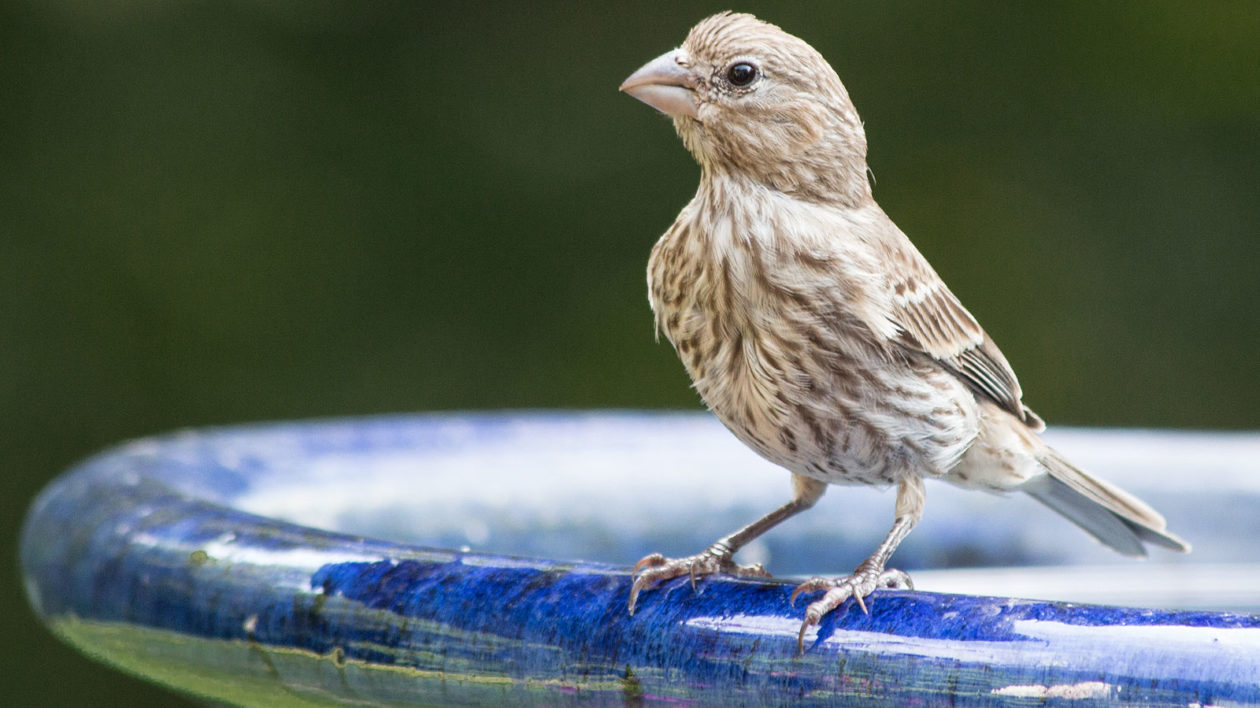
Does this play a role in the house sparrow’s widely reported worldwide decline? Probably not, as house sparrows are declining in Europe and India, where house finches aren’t found. However, with fewer house sparrows, it’s quite likely that house finch populations could increase.
Unless they fall to disease, which has happened. I recall when I lived in Pennsylvania in the 1990s, and suddenly house finches stopped showing up at area bird feeders. In 1994, birders reported house finches with “swollen, red, crusty eyes.”
This bacterial conjunctivitis left house finches functionally blind, which in turn left them unable to evade predators or bad weather. This disease spread across the country, including to native house finch populations. Native species like American goldfinches and purple finches are also susceptible to the disease. Unfortunately, as the disease has spread, it has grown more deadly.
Here’s where your feeder can make a difference. This is one of the best arguments for regularly cleaning and disinfecting your feeder, and to quit feeding birds altogether if you see a house finch with crusty eyes.
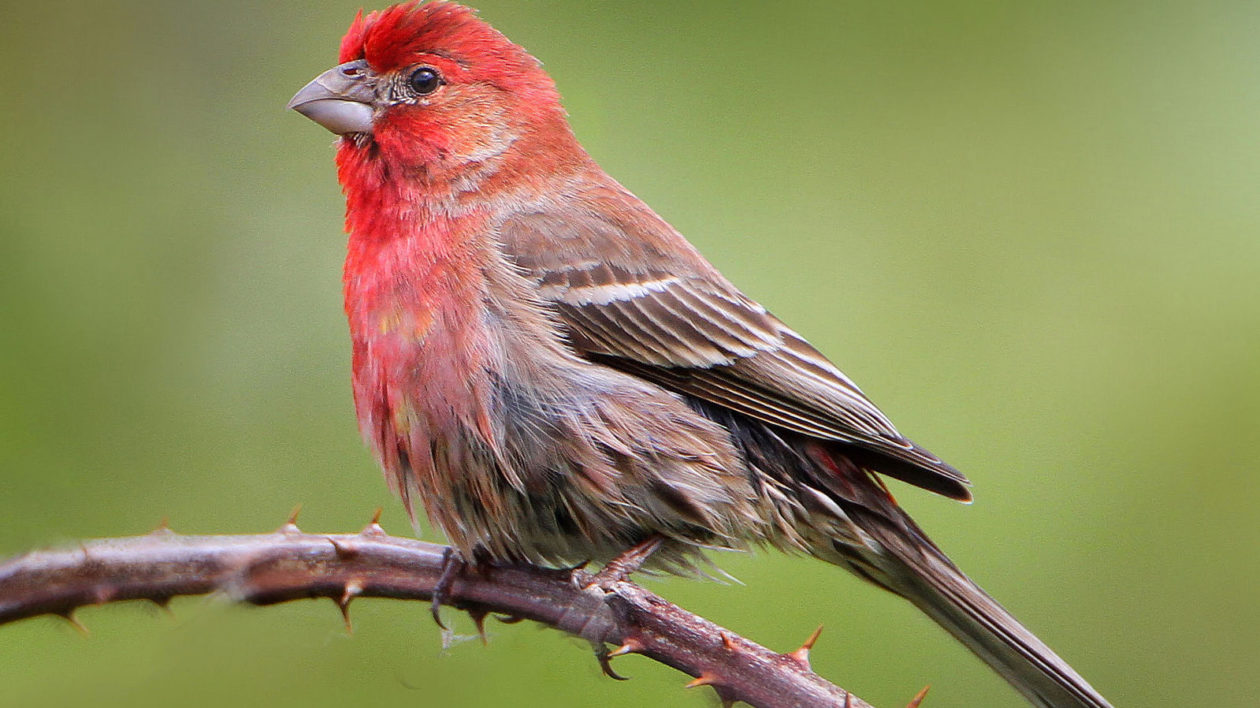
Citizen Science and the House Finch
Aside from keeping your feeder maintained, there’s something else you can do for house finches: report what you see. From the very first sighting of a wild bird in New York, citizen scientists have been the primary source of information about house finches.
It was backyard birders who documented the spread of the species, who first noted the eye disease and who record sightings that show house finch and house sparrow population dynamics. Through efforts like the Great Backyard Bird Count and Project FeederWatch, anyone can record sightings that, collectively, provide data to researchers and conservationists.
When I participate in the Great Backyard Bird Count, I often find myself hoping to find something truly unusual to report. Instead, I see common backyard birds, and house finches are always among the most numerous species. But my records of common species actually help quite a lot, as they allow researchers to track trends. Your observations matter, as conservationists continue to build an understanding of how we coexist with birds.
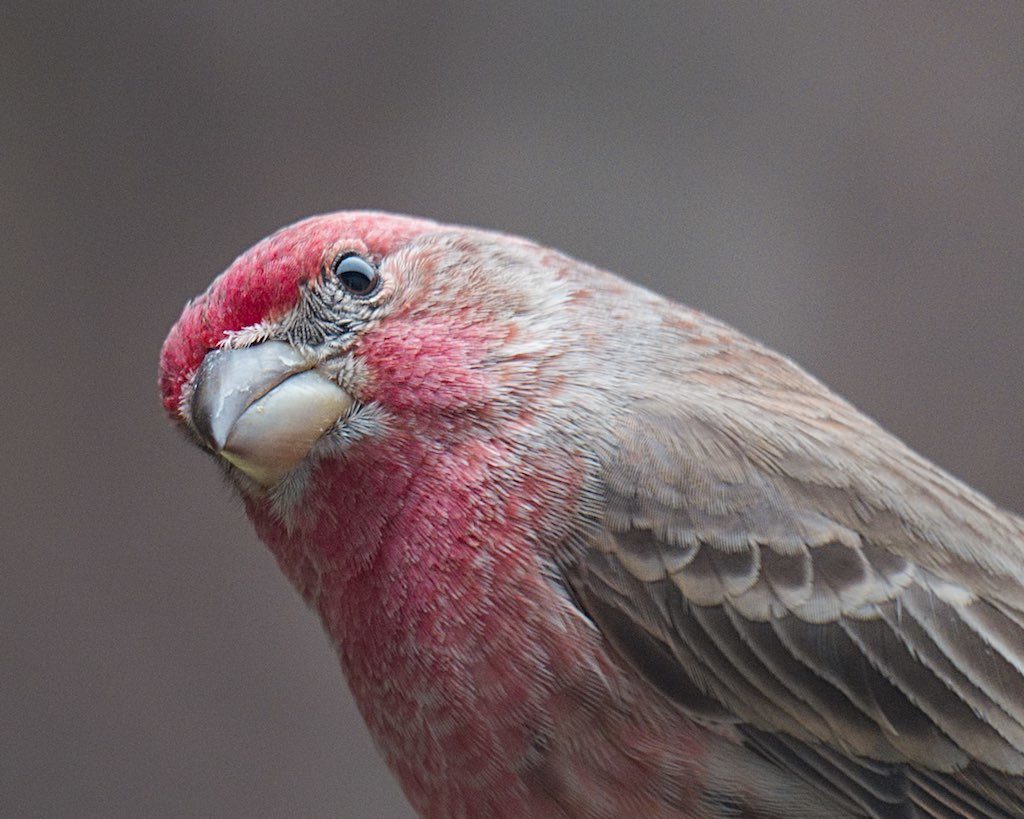



Sparrows will drive Finches and all other birds away in one day. They will raid the nests and kill the young and kill the adults pecking their eyes out.
That’s how sparrows kill other bird species: they peck their eyes out.
Backyard feeder only has finches. Sparrows stick to front yard feeders
House finches began nesting in my eaves after I expanded trellises for wisteria plants I added to my front garden. I hoped to distract them into houses. I think I failed at that. I now have wrens, house finches, and what I think are … nuthatches or titmouse’s (titmice?)… they look like chickadees but they are not chickadees, I think. So, now you know I am an expert… Ultimately the house finch nests fall, but this can take some time. They are messy. I worry. I think these birds are in these houses and nests all year round (Colorado). How can I tell if I am traumatizing them trying to clear house contents to protect birds from parasites, or address old nests…. Or, am I over thinking this whole business? Live and let live?
I live in Mullica Hill, New Jersey. We are just across the Delaware River from Philadelphia. We had a suction cup bird feeder attached to a window at the back of our house, which sits up against a wooded area. In April,2022 a female House Finch decided to make a nest in the bird feeder. She laid 5 eggs and 4 hatched successfully. All four have left the nest. I was going to remove the feeder so she could not lay any more eggs in it. But I was too late. She’s already sitting on four more eggs. I did not honestly think that would happen that fast! It was basically about two weeks between when the first clutch left to when she was sitting on a new clutch. Maybe it could be a different House Finch???
The finches swarm our feeder, taking over until the seed is gone. The jays, cardinals and others have no chance. We leave the feeder empty for a while, then feel the finches have moved on, but no chance. After a week we filled the feeder again with a mixture of songbird seed, and like clockwork the finches returned. IMO the finches are a trash bird, they are bullies, but how can we discourage them?
House finches were rare in the Blackhills SD a few years ago, but since we moved into town, they have taken over our feeders (deck condo with trees just off the railings), and have bullied the chickadees, nuthatches, gold finches, juncos, and even the grosbeaks off our feeders, by being aggressive and just by sheer numbers. I just took all our feeders down the other day, and they are still showing up pecking at anything that is left on the deck floor that my broom can’t reach. They are 100% a nuisance. I may participate in the backyard bird count at some point again, but for now, if I put the feeders back up, the only thing to report would be dozens of house finches every day.
I don’t see much altercations with the other birds that drop in to feed by the House Finches, I have many other species feeding with no problem.
I live 600 miles south of the border in Baja California, I have a population of House Finches and have seen one bird with a crusty and swollen eye, I was hoping it was not this disease mentioned here, but I am afraid it may be, I worry that taking down the feeders and water will cause many birds to go without and die, what should I do?
Hi JoLynn,
The birds will survive fine without your food. It is supplemental and wild birds can find food on their own. House finches are also subject to conjunctivitis, which includes the symptoms you mention. It is also contagious. It would be good for the birds to take down the feeders and clean and disinfect them.
I too as Ruth in Duluth, MN. Have a large number of the Red house finch fighting with each other at the feeder. Its interesting to watch as there often are 4 feeding at a time & all getting along fine until another shows up & chases them all away, allowing no other bird to feed until he is done. I enjoy seeing these colorful little birds here in Phoenix, AZ. So I continue to feed. I also have resident hummingbirds (Anna’s Ruby throat) who literally squawk in my face when their feeder is empty. They have also fed from our hands. We have plenty of babies over the summer months that we enjoy watching as they learn to fly!
I live in Cornwall Ontario, Canada. This morning, I noticed that a pair of birds I had never seen had taken over a nest used each year by robins. Research tells me they are house finches. Not sure that will bode well.
The house finches in our Duluth, MN backyard have shown themselves to be discourteous to other birds at our feeders. Most of the birds who frequent our feeders work out their differences and are able to co-exist. However, the house finches come in large flocks and mob the feeders, keeping the chickadees, nuthatches, juncos, and other birds away. Often they even try to keep each other away, scuffling and fighting amongst themselves.
I have started leaving the feeders empty when I notice an incursion, and keep them empty until they leave, which of course impacts the other birds. I have searched online to try to find out if other people have noticed this behavior but so far have found no mention of it. I would like to know if you have noticed it.
I Live in Western Massachusetts. I have a Christmas garland that is above my kitchen windows and there is also a three foot overhang of the roof in this area. Two years ago, a pair of house finches built a nest in the garland because I had forgotten to remove it in the springtime. This pair then had two other clutches that season. They returned last summer and repeated their nesting behavior with having another three clutches. After the little ones fledge I remove the old nest and spray the area with water so they can build a new nest. Right now, I have one pair who is sitting on their third clutch of the season and at the other end of the garland there is new pair who recently built a nest. I love my little resident house flinches! I have a beautiful new Goshen stone birdbath that they frequent and I have a thistle feeder nearby. It is always interesting to watch them. I really enjoyed reading this article about house finches.
In only 20 years they spread across the continent??Really!